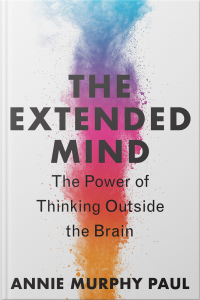By Christian Talbot, President of MSA-CESS

Have you ever heard an adult instruct a child not to talk with their hands?
Turns out that direction is terrible for learning.
As Annie Murphy Paul writes in The Extended Mind, gesturing not only helps us to think better, it also helps others to understand us better:
“Research demonstrates that gestures can enhance our memory by reinforcing the spoken word with visual and motor clues. It can free up our mental resources by ‘offloading’ information onto our hands. And it can help us understand and express abstract ideas—especially those, such as spatial concepts, that are inadequately expressed by words alone.”
Even more remarkable, the positive effects of gesturing increase over video. Given the prevalence of virtual learning experiences brought on by the COVID-19 pandemic, this is an especially important insight.
Another thing that is terrible for learning?
The trend to shorten lunch periods, eliminate recess, and reduce or eliminate physical education.
As Paul points out, even moderate “physical activity can enhance our cognition in the short term,” and the effects can last as long as two hours.
It is important for educators to understand the mechanisms that underlie movement’s positive effects on the brain. Paul points out that “the capacity to regulate our attention and our behavior is a limited resource, and some of it is used up by suppressing the very natural urge to move.”
In fact, a 2018 research study by Christine Langhanns and Hermann Müller from Justus Liebig University in Germany showed that cognitive load increased significantly after participants were told not to move.
Now think about the fact that “Children spend an average of 50% of the school day sitting, a proportion that increases as they enter adolescence.” How much mental energy are they squandering just complying with the expectation to sit still?
Conversely, UC Davis professor of psychiatry Julie Schweitzer found in a 2016 study that “the more children moved […], the more effectively they were able to think.”
Paul’s work points to many practical implications. Here are just a few:
- For school leaders: As you fine-tune (or redesign) your schedule, consider physical education and recess as “need to have” rather than “nice to have.” The choices we make with the schedule will either tax students’ attention or replenish it. I offer this with empathy—I have personally experienced zero sum negotiations over school schedules.
- For curriculum leaders: Physical education is important not only because it helps to reset attention, but also because it can improve cognition. And, as Michael Horn points out in From Reopen to Reinvent, well designed PE brings social, emotional, and character benefits.
- For classroom teachers: Talk with your hands! And encourage students to do the same. In addition, weave in brief movement breaks (these can be as short as 30-60 seconds). You will find this latter recommendation repeated in Neuroteach, authored by the leaders of the Center for Transformational Teaching & Learning.
In an age in which we are increasingly sedentary and mesmerized by screens, it’s good to remember that when we move our bodies we move our minds, too.
Annie Murphy Paul will talk about this and take some of your questions on Thursday, February 16 at 11 am ET. Please join us! You can register here.

